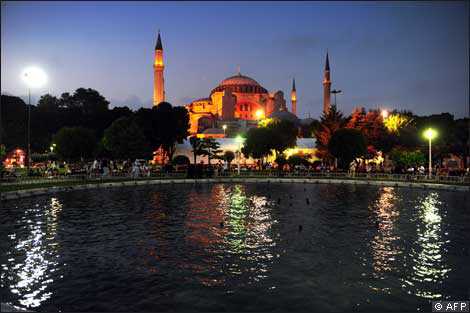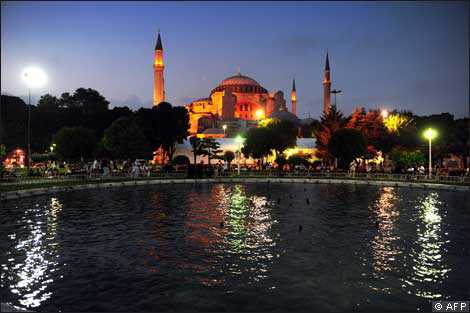
Well, that touched a nerve. The idea of liveable cities, it seems, is one that provokes the pen and the keyboard. My critique of the blandness of the cities that always seem to top the “world’s most liveable” lists, which was published in the FT’s House & Home section on May 8, engendered a vigorous response and a sustained debate. The results of an FT.com poll were surprising and, I think, intriguing. The city that came out top in a readers’ survey was Istanbul. I was truly glad when I saw it – here’s a city that is the antithesis of the bourgeois monoculture I had railed against and that seems to confirm everything I had argued for. Istanbul is cosmopolitan, busy, young in its population but historic in its fabric, socially mixed with a huge disparity of income, accessible and a city that has always built on its status as a bridge between not just continents but civilisations, ideas, religions and peoples.
Cities two and three were more predictable: London and New York. I came in for a little stick over my bias to the old familiars – and I admit it is a slightly FT choice – yet both cities have consistently managed to reinvent themselves and, I think, deserve their slots. It is also worth noting, though, that both London and New York have recently had issues with immigration, both city administrations being at odds with their larger national governments in their liberal outlook. Increasing barriers to immigration will lead to the staunching of skilled (and, just as importantly, unskilled but entrepreneurial) workers, which can only be a good thing for the competition elsewhere. It is something that cities need to look at seriously if they want to stay at the top. Where are London and New York without immigrants?
Please respect FT.com’s ts&cs and copyright policy which allow you to: share links; copy content for personal use; & redistribute limited extracts. Email [email protected] to buy additional rights or use this link to reference the article – http://www.ft.com/cms/s/2/2b65b494-8721-11e0-b983-00144feabdc0.html#ixzz1NpJiCDo3
I should have seen number four coming. I left San Francisco out of my list – I felt one US city was probably enough – but I can’t argue with the choice. Its ethnic and social mix, culture, climate, landscape and tolerance make it one of the few cities that deserves its place. I also hadn’t included Paris, which came in at number five. I opted for Rome instead, for no real reason other than its particular chaotic charm which is the opposite of the French capital’s bourgeois chic. But with its rigid city wall of the périphérique, its immigrant communities living beyond a ring of concrete and traffic, I found Paris difficult to include on grounds of social mobility.
Rio came next, followed by another of my omissions, Sydney – both cities embody a kind of sunny, laid-back, cosmopolitan lifestyle. Hong Kong at number nine sounds fair, though perhaps reveals another of those FT readership biases. Delhi at 10 was nothing to do with me.
Just as controversial was the blacklist, the most unliveable cities. It always sounds a little superficial to compile a list like this – there are plenty of contenders – but I tried to use each city to demonstrate a particular problem. Plenty of readers wrote to attack my choice of Jerusalem but my point about the importance of tolerance stands; divided cities provoke international tensions. No one came to the defence of Dubai but Moscow and Birmingham had their advocates. Moscow, one reader wrote, was significantly safer to wander around at night than New York. Unless, of course, you’re a journalist. As for poor Birmingham, I almost felt bad about including it but I used it to illustrate a particularly English problem. As the country’s second city it should be a bustling, vibrant cultural centre (think of Hamburg, Guadalajara, St Petersburg, Cape Town, Los Angeles and … you get the idea). There should be a sense of competition, of vying for position. Instead England seems stuck in a London-centric fug in which the capital’s dominance is completely unchallenged – to the huge detriment of the rest of the country. There is no evidence of any serious government policy being formulated to address the issue of a post-industrial north.
There were also, inevitably, those who were affronted by the omissions. Again and again, readers highlighted Barcelona. The city has done what Birmingham has been unable to do and has an extraordinary record in reinventing itself as a post-industrial destination, creating beaches out of wharves and conjuring seductive civic space from seemingly nothing. It is a city that has put its faith in thoughtful contemporary architecture and urbanism, that has protected its retail traditions and its historic core and emerged as a place anyone would happily spend a weekend, as well as a city for business. Quite an achievement.
Melbourne and Montreal came up multiple times too, both solid contenders but perhaps veering back into traditional liveable cities mode. Budapest was also mentioned, a beautiful city where I’ve lived and loved but which remains too far from the vibrant, cosmopolitan heart of central Europe it was a century ago. Brussels, Amsterdam, Edinburgh, Kyoto, Athens and many others made appearances and, judging from the mildly affronted views from Vancouver, perhaps I was a little harsh on the city in order to illustrate a point. Berlin, the city I struggled to omit, seemed sadly unrepresented and I thought Boston might have come up a little more.
Ultimately, the criteria are different for everybody; lists can only ever be personal. We make and remake our cities in our minds. As Jonathan Raban wrote in Soft City: “Living in a city is an art … The city as we imagine it, the soft city of illusion, myth, aspiration, nightmare, is as real, maybe more real, than the hard city one can locate in maps and statistics.” Or lists.
Financial Times


